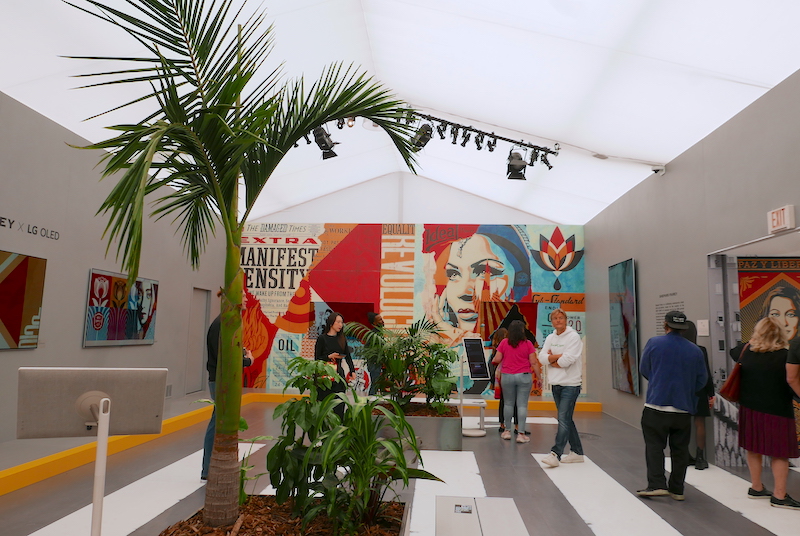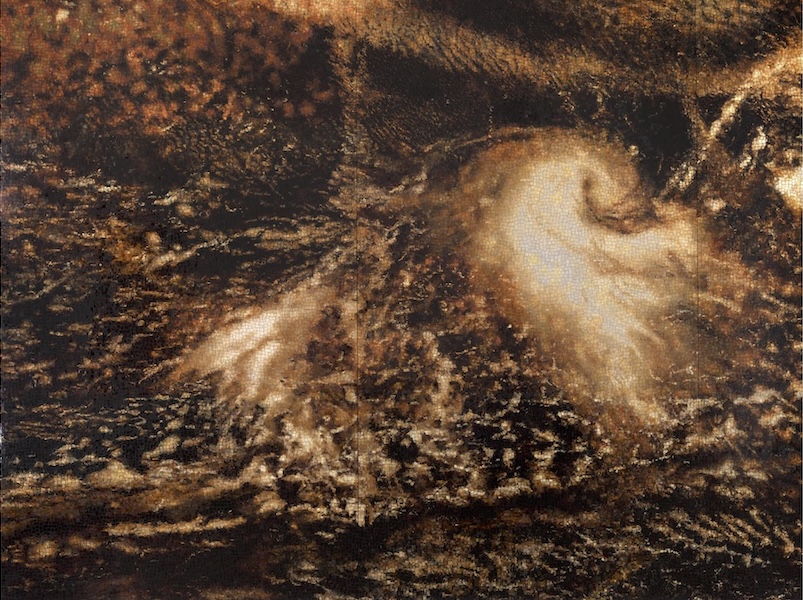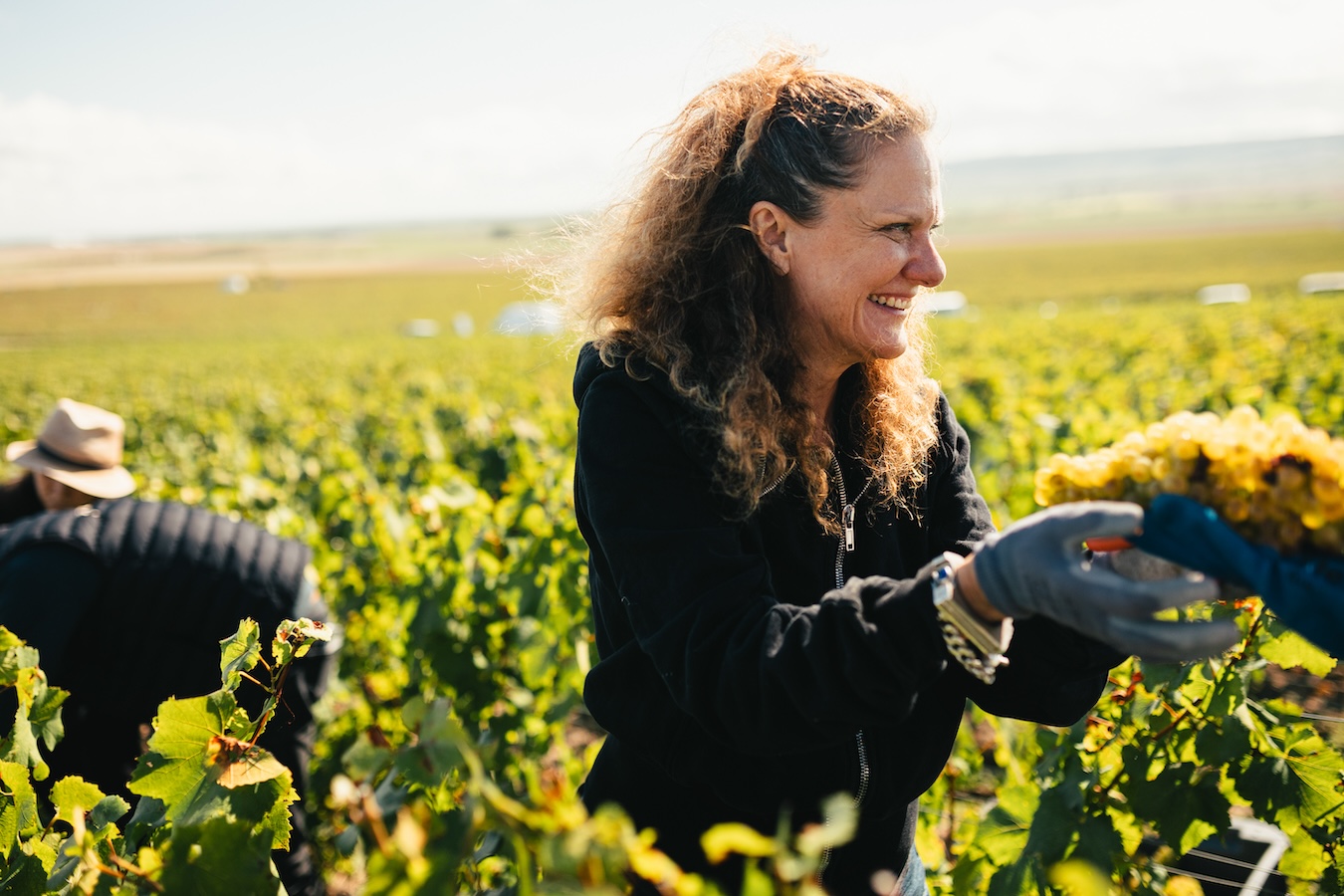At the start of this year, Lehmann Maupin announced the joint representation of Kim Yun Shin with Kukje Gallery in Seoul. The news marked the first time in the pioneering artist’s career, spanning nearly seven decades, that she will be exhibited by a commercial gallery. For Kim, the institutional support sped along international presentations, beginning with a selection of never-before-seen paintings alongside her acclaimed wood sculptures at Frieze Los Angeles (February 29–March 3). Not even two weeks later, her first solo show in New York opened, entitled “In Focus” (March 14–April 6) at Lehmann Maupin.
Regarded as one of the first women to formally train as a sculptor in Korea, Kim was born in the North yet raised in the South. Her firsthand experience of both World War II and the Korean War provided a tragic look at the atrocity conflict brings, and even separated her from her family members—many of whom she hasn’t seen since. In the 1940s and ’50s, migrating to South Korea and deciding to make art became a form of resistance, reflection, and expression. During this period, when art movements were formed to battle the nation’s opposition to art, Kim received her bachelor’s degree in 1959 from Hongik University in Seoul and her master’s degree in 1964 from the École nationale supérieure des Beaux-Arts in Paris. Five years later, she began teaching sculpture at Sangmyung University, and co-founded the Korea Sculptress Association alongside other women artists.
 Kim Yun Shin, Song of My Soul 2016-11, 2016, mixed media on canvas, 47.24 x 59.06 inches, courtesy the artist, Lehmann Maupin, New York, Seoul, and London; and Kukje Gallery, Seoul and Busan.
Kim Yun Shin, Song of My Soul 2016-11, 2016, mixed media on canvas, 47.24 x 59.06 inches, courtesy the artist, Lehmann Maupin, New York, Seoul, and London; and Kukje Gallery, Seoul and Busan.
Kim’s artistic practice reflects natural and constructed environments, culture, and spirituality. Her sculptures, typically carved from solid wood, embody aspects of the primordial world and aid in her quest to become one with the Eastern philosophy of yin and yang. For the past 40 years, Kim’s work has also been split between Buenos Aires and Seoul—a duality that affords her two separate studios and a creative practice rooted in dynamic urban fabrics and nature. With a deep reverence for organic materials, as well as an openness to a nomadic and independent lifestyle, Kim has shown her work around the world. Sculptures rooted in Korean kanok architecture, which utilize an architectural technique called Gyeolgu-beop to fit pieces of wood together in carved slots rather than nails, gained acclaim, paving a path to a practice centered on traditional and contemporary techniques.
“My art is a process of immersion, a union with nature,” —Kim Yun Shin
This spring for the 60th Venice Biennale, Kim will present a selection of wood and stone sculptures in an exhibition titled “Stranieri Ovunque – Foreigners Everywhere” in the fair’s Giardini section. The pieces on view will visualize her experience as a foreigner, showing her acceptance and reflections of differences between life in Korea, Europe, and South America.
On the heels of her 90th birthday, Kim shared with Whitewall how her career in art has evolved and why it remains inextricably linked to nature, regardless of where she is.
 Kim Yun Shin, “Song of My Soul 2019-03,” 2019, acrylic on canvas, 39.37 x 47.24 inches, courtesy the artist, Lehmann Maupin, New York, Seoul, and London; and Kukje Gallery, Seoul and Busan.
Kim Yun Shin, “Song of My Soul 2019-03,” 2019, acrylic on canvas, 39.37 x 47.24 inches, courtesy the artist, Lehmann Maupin, New York, Seoul, and London; and Kukje Gallery, Seoul and Busan.
WHITEWALL: Recently, we saw your works at Frieze Los Angeles in Lehmann Maupin’s booth, including some of your wood sculptures and a series of never-before-seen paintings. What was this presentation’s focus?
KIM YUN SHIN: The focus was primarily on my painting series, titled “Songs of My Soul,” along with wood sculptures. “Songs of My Soul” is a long-standing series of paintings that captures the musical elements perceived from my paintings and my senses absorbed while painting. The wood sculptures were created from the trees I found in Argentina and are from the series titled “Add two add one and Divide two divide one.” These sculptures, revealing both the outer bark and inner flesh of the wood, will allow you to understand my creative processes of becoming one with the Eastern philosophy of yin and yang, as well as nature.
“My wood and stone sculptures encapsulate the life I’ve lived,”—Kim Yun Shin
WW: We also saw your first solo exhibition at the gallery in New York, “In Focus.” How does this presentation exemplify what your practice is known for?
KYS: At the exhibition, the audience will have the opportunity to see the paintings and wood sculptures, and all the works in the exhibition have originated from nature and my inner self. My art is a process of immersion, a union with nature. Art is life, and life is art. I hope the time I have invested in my work and the message about art is effectively conveyed to the audience.
WW: Typically in your practice, you use solid wood to embody the primordial world—the world of origin. Why is wood the material you choose to work with, even today?
KYS: Having experienced war in my childhood, I have come to understand the importance and the enlightenment of life. Trees themselves evoke a strong vitality and a primal sensation. This is why I am drawn to wood as a material. On the other hand, trees possess a life force that surpasses the human life span. Therefore, they also connect us to our ancient world and origins.
WW: You were born in North Korea, yet raised in the South, in Seoul. What do you wish others knew about your migration out of the North and into the South, where making art was possible?
KYS: Having experienced both World War II and the Korean War, I witnessed the atrocities and deaths that come with a war. War is tragic. I long for my childhood home, and I miss my sisters and family members whom I haven’t seen for 70 years.
WW: You’re regarded as one of the first women to formally train as a sculptor in Korea. What was the art landscape like when you began working in sculpture?
 Kim Yun Shin, “Add Two Add One Divide Two Divide One 2015-23,” 2015, Algarrobo wood, 17.72 x 15.75 x 16.54 inches, courtesy the artist, Lehmann Maupin, New York, Seoul, and London; and Kukje Gallery, Seoul and Busan.
Kim Yun Shin, “Add Two Add One Divide Two Divide One 2015-23,” 2015, Algarrobo wood, 17.72 x 15.75 x 16.54 inches, courtesy the artist, Lehmann Maupin, New York, Seoul, and London; and Kukje Gallery, Seoul and Busan.
“I have come to understand the importance and the enlightenment of life,” —Kim Yun Shin
KYS: I am contemporary to the artists who were heavily involved in the Informel and Dansaekhwa. Around the time I began my work, it was the time when art movements were against national contest for art. For instance, in 1957, there were artists who declared anti-censorship, and they were developing an abstract art movement.
WW: Today, your artworks are often influenced by the structural and spiritual elements of ancient practices. What about these practices do you hope to embody or show in your work?
KYS: I would like to start with a story about my mother. She set up a ritual of praying with a bowl of clean water in front of her for my brother, who was the only son of three generations in my family. When you consider that art is an expression of one’s inner self, I believe it is connected to kinds of wishes and desires. The structural and spiritual elements of ancient practices can be linked to the old habits of humans’ longings, and to shamanism.
WW: What is your relationship with nature right now? How do your works speak to that?
KYS: Interacting with nature is extremely important to me. I can only start working when I have observed nature for a long time and become one with its original stance. I immerse myself in the life force, colors, shapes, and feelings of nature to form a relationship with it. The artwork fully reveals this process. For example, the title of my sculpture is 合二合一 分二分一 (Add two add one, Divide two divide one). It expresses the yin and yang of Eastern philosophy. “Yang” signifies division and separation, while “yin” signifies unity and harmony. There is “yin” within “yang” and “yang” within “yin,” and as such, division is for the sake of unity, and separation is for the sake of harmony. Different entities meet to become one and to grow further, they must divide into different entities again. This universal and natural principle is what I express in my work. I create spaces by cutting a piece of wood, contemplating division and separation, and thinking about unity and harmony as I join two or several pieces of wood. I spend a long time looking at a given or chosen log to read the message it offers. Then, with an electric saw, I create facets that would then form harmonious lines. Through these forms and lines, I manifest Add two add one, Divide two divide one.
WW: You have two studios, in Buenos Aires and in Seoul. What does having two spaces allow your creative practice?
KYS: I feel grateful that I have studios in two different cities. I believe that being able to work in two countries allowed me to continuously work without the feeling of fatigue, and having this consistency in creating is my way of repaying such a blessing.
WW: What about the city of Buenos Aires was interesting to you back in 1984?
KYS: Firstly, the horizon was beautiful; the land and sky were flat. The people were gentle and kind. Thirdly, there were trees; thick and large sturdy trees were abundant. At that time, Korea had just come out of the war, so there were only dry trees. The species of trees in Argentina were fascinating, and the culture of the people and the traditional culture of South America were also of interest.
 Kim Yun Shin, “Song of MY Soul 2008-97,” 2008, oil on canvas, 47.24 x 59.06 inches, courtesy the artist, Lehmann Maupin, New York, Seoul, and London; and Kukje Gallery, Seoul and Busan.
Kim Yun Shin, “Song of MY Soul 2008-97,” 2008, oil on canvas, 47.24 x 59.06 inches, courtesy the artist, Lehmann Maupin, New York, Seoul, and London; and Kukje Gallery, Seoul and Busan.
“Art is life, and life is art,”—Kim Yun Shin
WW: How did moving here expand your practice?
KYS: The differences in life’s culture and materials in contrast to Korea have expanded my work. The leisureliness and peacefulness of Argentina were conducive to working. I selected some cultural elements of Argentina’s ancient indigenous people and applied to my paintings. In addition, I was given the opportunity to venture into stone carving in Mexico.
WW: In 2008, you founded the Museo Kim Yun Shin in Buenos Aires. What was it like being both the artist and the exhibitor of your own work?
KYS: Having worked in Argentina for 30 years, I accumulated quite a lot of work. As such, it became my lifelong dream to show them all together in one location. In 2008, I fulfilled that dream by opening the first art museum in South America named after myself, a Korean sculptor. I have been having my solo exhibitions there every two years, for which I work tirelessly all year round in preparation. Around the time the museum opened, the vice president of Argentina visited, and every time there was an exhibition, it drew attention to the extent that the mayor and other important visitors made a point to come and see the shows.
In Buenos Aires, there is an event organized by the city called “Museum Night,” and since 2010, my museum has participated annually. For that special occasion, the public transportation to the areas where the participating museums and galleries are free, and art lovers would carry a “Museum Night” guide map, hopping on and off buses for free until dawn, enjoying and appreciating the exhibitions. About eight hundred people would visit the museum in just one night. Normally, I also teach painting to Korean immigrants and host exhibitions for amateur artists, aiming to provide emotional refinement. Being able to fully engage in what I love and contribute to creating a beautiful culture is immensely rewarding for me.
WW: You most recently shared that you’re moving back to Seoul after being in Buenos Aires for many years, yet it’s not a complete relocation. Can you share more details with us about how you’ll be splitting your time between both cities?
KYS: I plan to spend about seven to eight months in Korea and about four months in Buenos Aires, where I’ve left a small space to continue my work. The reason I’ve relocated all the works to Korea this time is because it has become difficult to send artworks abroad for exhibitions from Argentina.
WW: In April, your show “Stranieri Ovunque – Foreigners Everywhere” will open at the Venice Biennale. What we can expect to see? To feel?
KYS: The sculptures being exhibited are all inspired by nature. My art is the process of immersion and the union with nature. Art is life, and life is art, in essence. I hope the time I have put into my work and my attitude towards art are well conveyed to the audience.
 Kim Yun Shin, “Song of My Soul 2016-20,” 2016, mixed media on canvas, 39.37 x 47.24 inches, courtesy the artist, Lehmann Maupin, New York, Seoul, and London; and Kukje Gallery, Seoul and Busan.
Kim Yun Shin, “Song of My Soul 2016-20,” 2016, mixed media on canvas, 39.37 x 47.24 inches, courtesy the artist, Lehmann Maupin, New York, Seoul, and London; and Kukje Gallery, Seoul and Busan.
WW: What does this show—its title, the artworks in it, and presenting it in Venice—mean to you?
KYS: I understand that this year’s Venice Biennale has invited artists whose works are based on their experiences as foreigners and their diasporic experiences. I, too, have experiences of accepting differences and reflecting them in my work while living as a foreigner in Europe and South America. It seems that these themes align well with the roots of my work. My wood and stone sculptures encapsulate the life I’ve lived across various continents, and participating in the Biennale is an incredibly grateful and amazing event.
WW: Aside from your exhibitions, what are you looking forward to experiencing in 2024?
KYS: I plan to focus on ensuring that the works sent from Argentina arrive safely in Korea and to create an environment where they can be well preserved, and I can continue my work. In terms of my artistic practice, I am continuously contemplating the integration of painting and sculpture in an organic way.











